
 Video
Video
Laparoscopic Ventral Hernia Repair using GORE® SYNECOR® BioMaterial
Carl R. Doerhoff, MD, FACS, practices in SurgiCare in Jefferson City, Missouri, presents the use of the GORE® SYNECOR® BioMaterial Laparoscopic ventral hernia repair.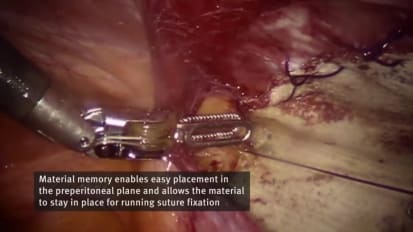 Video
Video
Robotic Preperitoneal Umbilical Hernia Repair
Robotic preperitoneal repair of an umbilical hernia utilizing GORE® SYNECOR Preperitonal Biomaterial by Matthew R. Reynolds, D.O.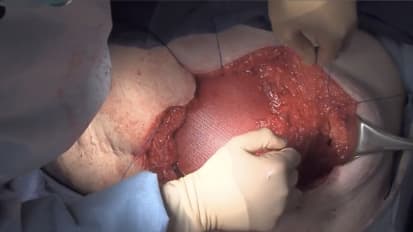 Video
Video
Ventral Hernia Repair Using the Components Separation Technique
Brent Mathews, M.D., FACS, performs a ventral hernia repair using the components separation technique. Document
Document
Biosynthetic Tissue Scaffold Recruits Progenitor Cells in Muscle Tissue Healing Model
This study demonstrates that the open, porous structure of the GORE® BIO-A® Tissue Reinforcement is able to recruit the Pax7+ cells residing in host muscle, a critical step in muscle regeneration.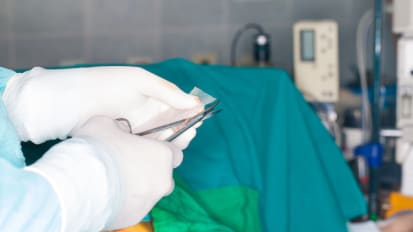 Video
Video
A Value Case Study Featuring GORE® BIO-A® Tissue Reinforcement for Hernia Repair
Learn how a US Midwestern medical center saved $340,000 with no change in quality outcomes* over 12 months when they switched to GORE® BIO-A® Tissue Reinforcement for complex hernia repairs. Learn why GORE® BIO-A® Tissue Reinforcement has proven outcomes and reduced costs for complex hernia repairs.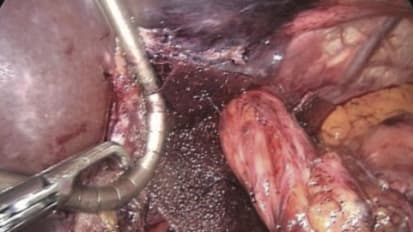 Document
Document
Tissue Reinforcement with GORE® BIO-A® Material in Large Hiatal Hernias: A Prospective Clinical Study
GORE® BIO-A® Tissue Reinforcement is a three dimensional resorbable mesh which has demonstrated to be a ideal “scaffold” facilitating tissue generation and healing without the risk of a non-resorbable implant.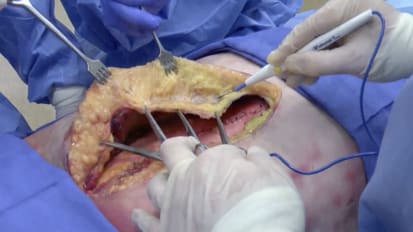 Video
Video
Posterior sheath mobilization in preparation for retromuscular hernia repair
John P. Fischer, M.D., MPH, FACS, is a specialist in abdominal wall reconstruction. This is a surgical technique video demonstrating the posterior sheath mobilization and creation of the retromuscular space.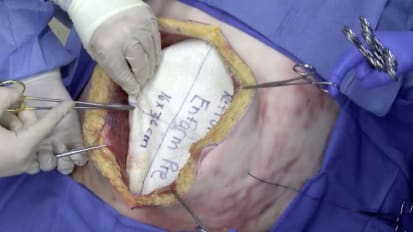 Video
Video
Retromuscular hernia repair using GORE® ENFORM Preperitoneal Biomaterial with percutaneous suture fixation
John P. Fischer, M.D., MPH, FACS, is a specialist in abdominal wall reconstruction. This is a surgical technique video demonstrating retromuscular repair using GORE® ENFORM Preperitoneal Biomaterial with percutaneous fixation.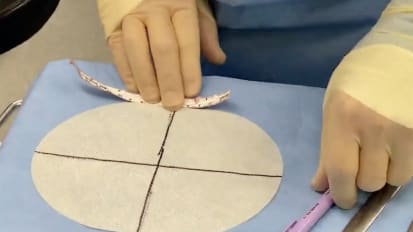 Video
Video
Robotic Sugarbaker Repair of a Parastomal Hernia utilizing GORE® SYNECOR Intraperitoneal Biomaterial
Karl A. LeBlanc, MD, MBA, FACS, FASMBS performs a Sugarbaker Repair of a Parastomal Hernia Utilizing GORE® SYNECOR Intraperitoneal Biomaterial 15 cm x 20 cm Synthetic Hybrid Mesh. Document
Document
Better AWR Outcomes. Reinforced by Data. GORE® BIO-A® Tissue Reinforcement offers proven low complication rates in high risk AWR patients
GORE® BIO-A® Tissue Reinforcement offers proven low complication rates in high risk AWR patients1 vs. BARD® DAVOL PHASIX Mesh. Video
Video
Retromuscular hernia repair using GORE® ENFORM Preperitoneal Biomaterial with percutaneous suture fixation
John P. Fischer, MD, MPH, FACS, is a specialist in abdominal wall reconstruction. This is a surgical technique video demonstrating the retromuscular repair of the abdominal wall with GORE® ENFORM with preperitoneal biomaterial using percutaneous fixation. Document
Document
A Cost Comparison of Mesh Usage in Laparoscopic Paraesophageal Hernia Repair
The aim of this study was to compare costs of the GORE® BIO-A® Device, ALLERGAN ALLODERM Device, and ALLERGAN STRATTICE Device in relation to the outcomes in terms of length of stay and recurrence rate following PEH repair.